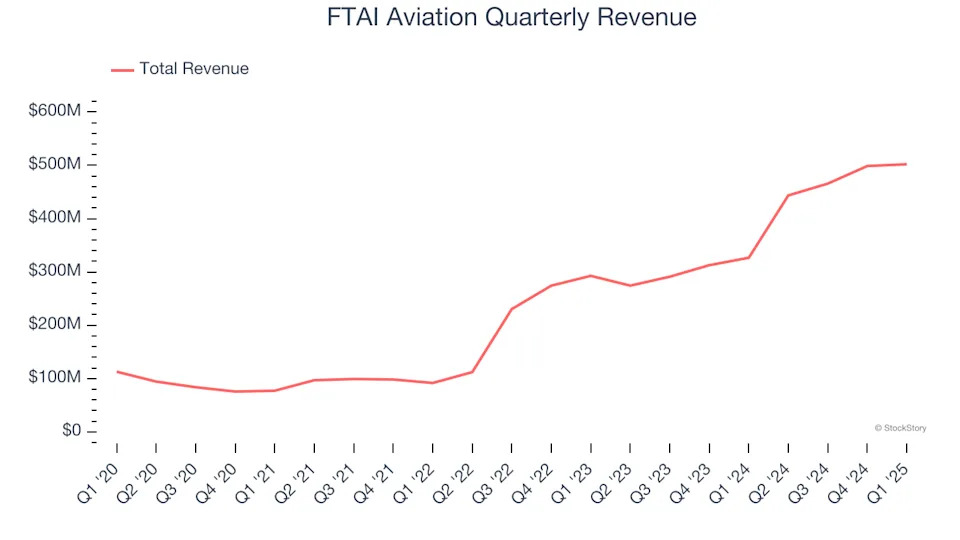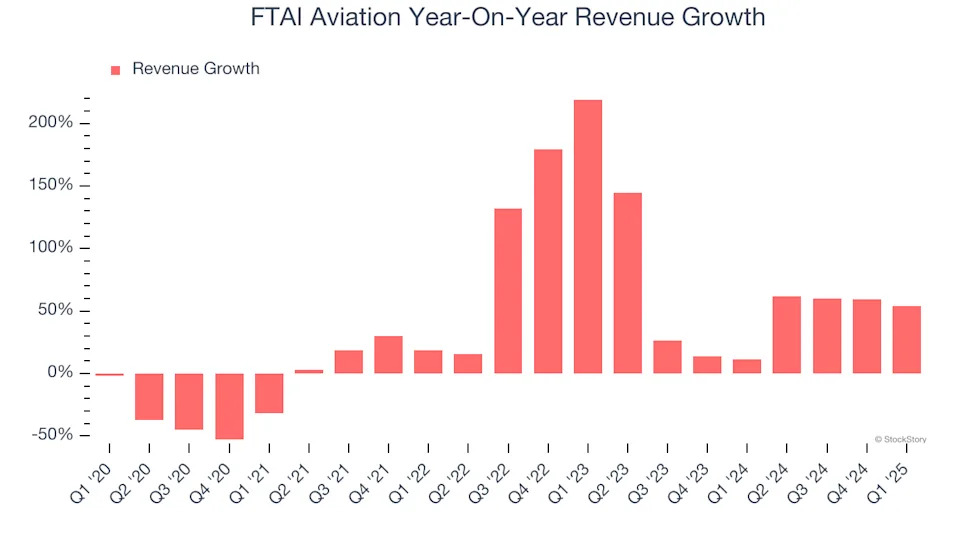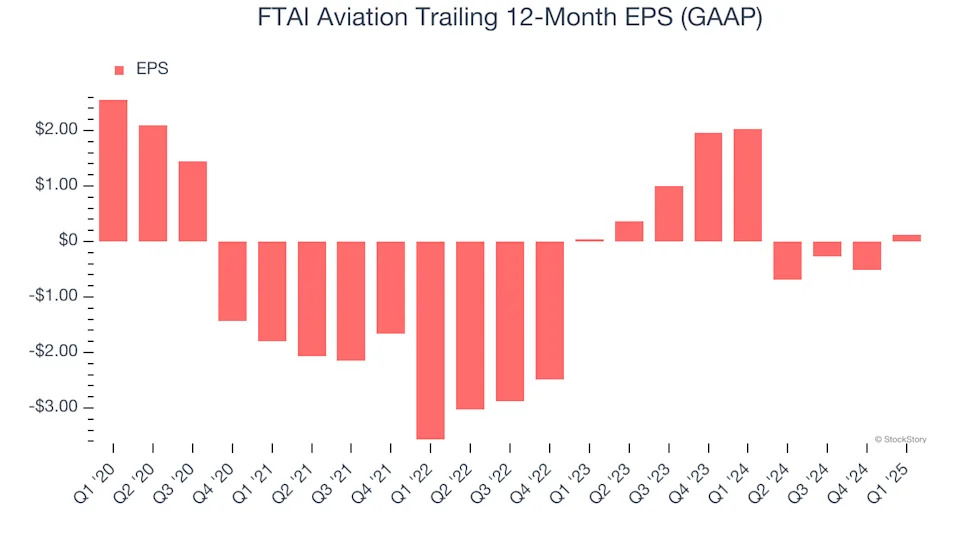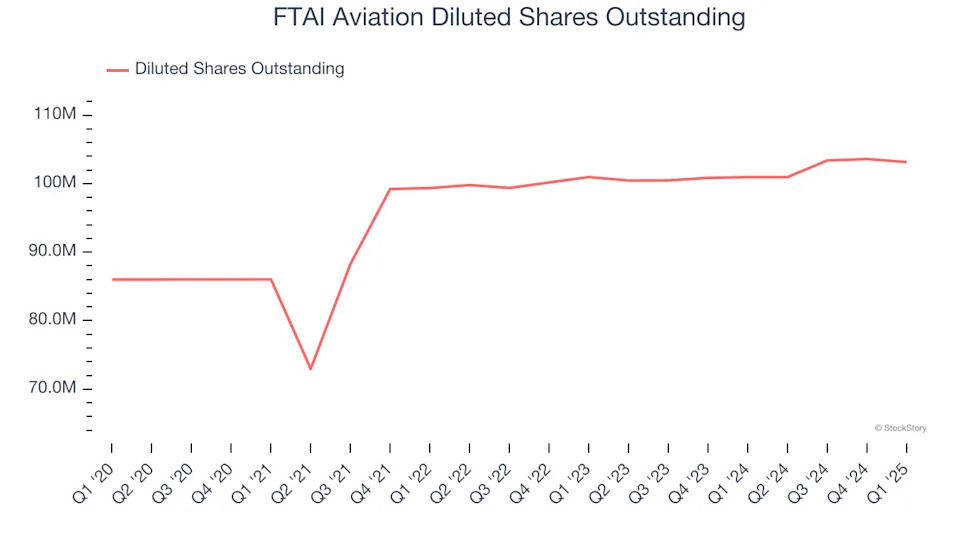Aircraft leasing company FTAI Aviation (NASDAQ:FTAI) missed Wall Street’s revenue expectations in Q1 CY2025, but sales rose 53.7% year on year to $502.1 million. Its GAAP profit of $0.87 per share was 8.8% below analysts’ consensus estimates.
Is now the time to buy FTAI Aviation? Find out in our full research report .
FTAI Aviation (FTAI) Q1 CY2025 Highlights:
Company Overview
With a focus on the CFM56 engine that powers Boeing and Airbus’s planes, FTAI Aviation (NASDAQ:FTAI) sells, leases, maintains, and repairs aircraft engines.
Sales Growth
A company’s long-term sales performance is one signal of its overall quality. Even a bad business can shine for one or two quarters, but a top-tier one grows for years. Thankfully, FTAI Aviation’s 27.1% annualized revenue growth over the last five years was incredible. Its growth surpassed the average industrials company and shows its offerings resonate with customers, a great starting point for our analysis.

Long-term growth is the most important, but within industrials, a half-decade historical view may miss new industry trends or demand cycles. FTAI Aviation’s annualized revenue growth of 44.9% over the last two years is above its five-year trend, suggesting its demand was strong and recently accelerated.

This quarter, FTAI Aviation achieved a magnificent 53.7% year-on-year revenue growth rate, but its $502.1 million of revenue fell short of Wall Street’s lofty estimates.
Looking ahead, sell-side analysts expect revenue to grow 33.2% over the next 12 months, a deceleration versus the last two years. Still, this projection is healthy and implies the market is forecasting success for its products and services.
Today’s young investors likely haven’t read the timeless lessons in Gorilla Game: Picking Winners In High Technology because it was written more than 20 years ago when Microsoft and Apple were first establishing their supremacy. But if we apply the same principles, then enterprise software stocks leveraging their own generative AI capabilities may well be the Gorillas of the future. So, in that spirit, we are excited to present our Special Free Report on a profitable, fast-growing enterprise software stock that is already riding the automation wave and looking to catch the generative AI next .
Operating Margin
Operating margin is one of the best measures of profitability because it tells us how much money a company takes home after procuring and manufacturing its products, marketing and selling those products, and most importantly, keeping them relevant through research and development.
FTAI Aviation has been a well-oiled machine over the last five years. It demonstrated elite profitability for an industrials business, boasting an average operating margin of 17%. This result isn’t surprising as its high gross margin gives it a favorable starting point.
Analyzing the trend in its profitability, FTAI Aviation’s operating margin rose by 25.5 percentage points over the last five years, as its sales growth gave it immense operating leverage.

This quarter, FTAI Aviation generated an operating profit margin of 43.4%, up 14.9 percentage points year on year. The increase was solid, and because its operating margin rose more than its gross margin, we can infer it was more efficient with expenses such as marketing, R&D, and administrative overhead.
Earnings Per Share
We track the long-term change in earnings per share (EPS) for the same reason as long-term revenue growth. Compared to revenue, however, EPS highlights whether a company’s growth is profitable.
Sadly for FTAI Aviation, its EPS declined by 45.2% annually over the last five years while its revenue grew by 27.1%. However, its operating margin actually expanded during this time, telling us that non-fundamental factors such as interest expenses and taxes affected its ultimate earnings.

Diving into the nuances of FTAI Aviation’s earnings can give us a better understanding of its performance. A five-year view shows FTAI Aviation has diluted its shareholders, growing its share count by 19.9%. This dilution overshadowed its increased operating efficiency and has led to lower per share earnings. Taxes and interest expenses can also affect EPS but don’t tell us as much about a company’s fundamentals.

Like with revenue, we analyze EPS over a shorter period to see if we are missing a change in the business.
For FTAI Aviation, its two-year annual EPS growth of 85.3% was higher than its five-year trend. This acceleration made it one of the faster-growing industrials companies in recent history.
In Q1, FTAI Aviation reported EPS at $0.87, up from $0.23 in the same quarter last year. Despite growing year on year, this print missed analysts’ estimates. Over the next 12 months, Wall Street expects FTAI Aviation’s full-year EPS of $0.13 to grow 4,401%.
Key Takeaways from FTAI Aviation’s Q1 Results
We were impressed by how significantly FTAI Aviation handily beat analysts’ EBITDA expectations this quarter. On the other hand, its revenue missed. Overall, this was a mixed quarter. The stock traded down 2.3% to $104.55 immediately following the results.
FTAI Aviation’s earnings report left more to be desired. Let’s look forward to see if this quarter has created an opportunity to buy the stock. What happened in the latest quarter matters, but not as much as longer-term business quality and valuation, when deciding whether to invest in this stock. We cover that in our actionable full research report which you can read here, it’s free .





